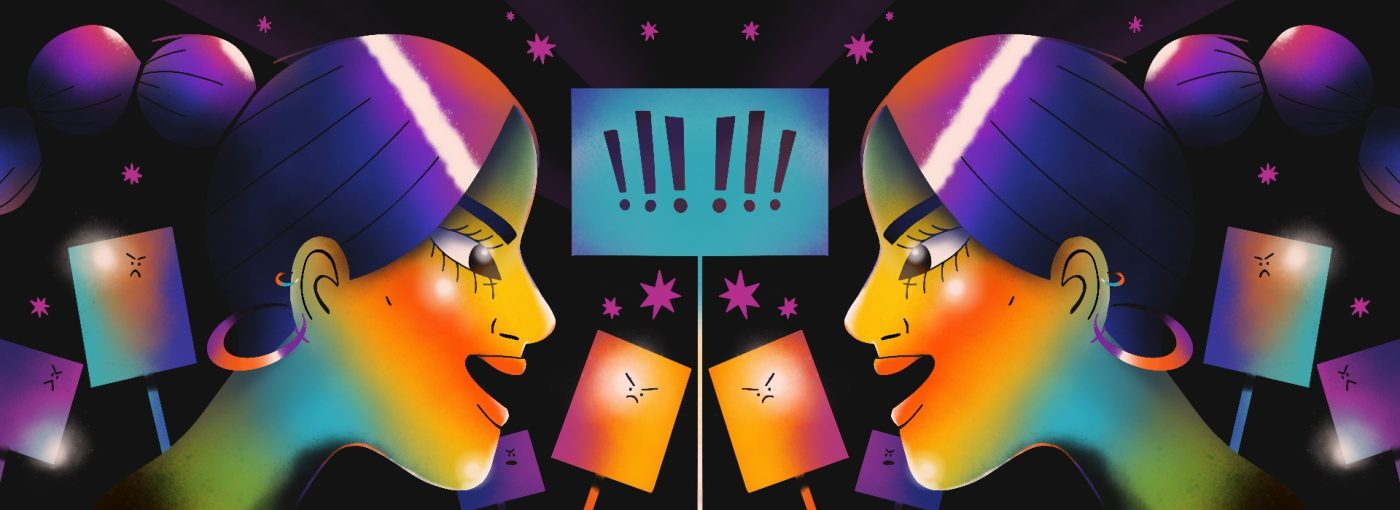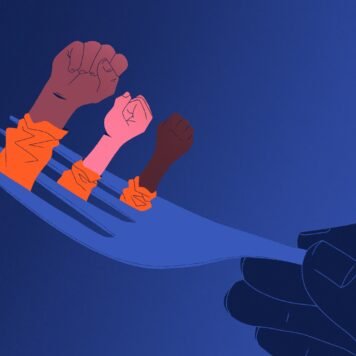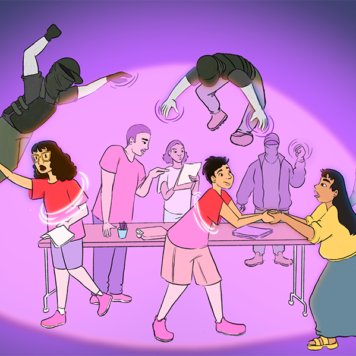Over the past few weeks, the UK has seen thousands of people take to the streets to protest the Police, Crime, Sentencing and Courts (PCSC) Bill, in what are being called the ‘kill the bill’ protests. These protests grew in force after the violent events on the 13th of March on Clapham Common. People, mostly women, came to Clapham Common to grieve the death of Sarah Everard and all the other people who’d been victims of gendered violence. And instead of being given the space to express their pain and anger, the Metropolitan Police met them with brutal force and violence. Violence that was widely condemned by many across the political spectrum.
However, a lot of the condemnation, and the wider discussions around the kill the bill movement, was centred on this idea of a ‘peaceful’ vigil, and later a ‘peaceful’ protest. People were outraged that the police behaved so violently in the face of a peaceful and quiet vigil, as if to say that if people were disruptive or violent, then the police’s behaviour would somehow be acceptable or justified. This distinction between a ‘peaceful’ protest and a ‘violent’ one is not only unhelpful, but can actually cause harm to people and movements who are trying to bring about real change.

Protests are not meant to be peaceful affairs. The very nature of protest is not quiet. If they were, people wouldn’t really listen to the demands made by them. Protest is defined in the Oxford Dictionary as ‘a statement or action expressing disapproval of or objection to something’, with the key part being the disapproval or objection element. And this objection isn’t always violent, but when it is, it’s usually due to a number of factors with the main being the role of the state.
People tend to turn to protest as a last resort. Other avenues for change have clearly not worked or had the desired effect, so people organise en masse so that their collective voices are heard by the powers that be. And yes, sometimes they become violent. Sometimes property gets damaged or vandalised. And when the police decide to respond with force and brutality, sometimes people have to retaliate with violence. When the state has historically used violence to oppress people, including violent and oppressive policies such as Prevent and the Hostile Environment, it should come as no surprise that those very same people may also turn to violent means. Especially when those means are a direct response to the violent involvement of the police during protests.
What we’ve seen play out in the kill the bill protests has happened in history time and time again. The Tottenham protest in 2011, where people were demanding answers for the death of Mark Duggan, turned violent when a 16 year old woman who stepped forward to confront the police was then allegedly beaten with shields and batons. Or during the student tuition fees protests in 2010 where the police used excessive and violent force, with the Metropolitan Police even facing legal action for their behaviour. Or more recently with last year’s Black Lives Matter protests which saw police use baton and horse charges, pepper spray, and violent arrests. All these protests involved violence, mainly at the hands of the authorities. During the BLM protests last year, Chris Cuomo, an American TV presenter, said “the police are the ones who are required to be peaceful, to de-escalate, to remain calm.” But when police involvement always seems to lead to the complete opposite happening, it speaks to the role that the police actually play in our society. A role that’s very much rooted in state violence.
The very act of distinguishing between a peaceful protest and a violent one is a tool pushed by the state to distract us. Whilst we criticise and fight amongst ourselves about the nature of protesting or how violent action ‘won’t do the cause any good’, the police and the government are maintaining the status quo and continuing to oppress so many of our communities. They actively encourage this narrative of ‘good’ protesters and ‘bad’ protesters as just another way to divide and conquer people and movements, and effectively suppress any sort of change.
This is exactly what we’ve seen happen with the kill the bill protests. The government has condemned the violent protests by pointing and comparing them to the more peaceful ones, and distinctions are made and embedded in the social consciousness. Distinctions which are then further reinforced by the media. But it’s important to remember what happened on Clapham Common that Saturday. A peaceful vigil was still met with the full force of the police, so it poses the question – does it matter the nature of how we protest? The police are still responding with violence, so pandering and aligning with the state’s requirements for ‘peaceful’ protesting, or asking permission, seems quite pointless. Especially when the very thing you’re protesting is state oppression and violence.
It makes little sense to be asking permission to protest state oppression from the people who are doing the oppressing. And this is something we’ve seen laid out perfectly in the recent findings of the enquiry into the police’s response at the Clapham Common vigil. The report found that the Met Police ‘acted appropriately’ and much of the public criticism ‘jumped to conclusions’. But this was an enquiry that was effectively the police investigating their own behaviour, so the findings are just as you’d expect.
With the PCSC bill proposing increased police powers and restricting the right to protest, this idea of good and bad protesting becomes a moot point. Because any protesting or action that is seen as ‘disruptive’ or causing an ‘annoyance’ would be criminalised, no matter how peaceful it is. The effects of this bill wouldn’t be limited to protests perceived as bad or violent, but would apply to all. It would affect each and every one of us. So, instead of trying to appease the state with ‘good’ protesting, we should be focusing all that energy into standing and fighting alongside each other. Because in the end, all forms of protest are important – and all are very much needed right now.

See more of Alex’s work on instagram






